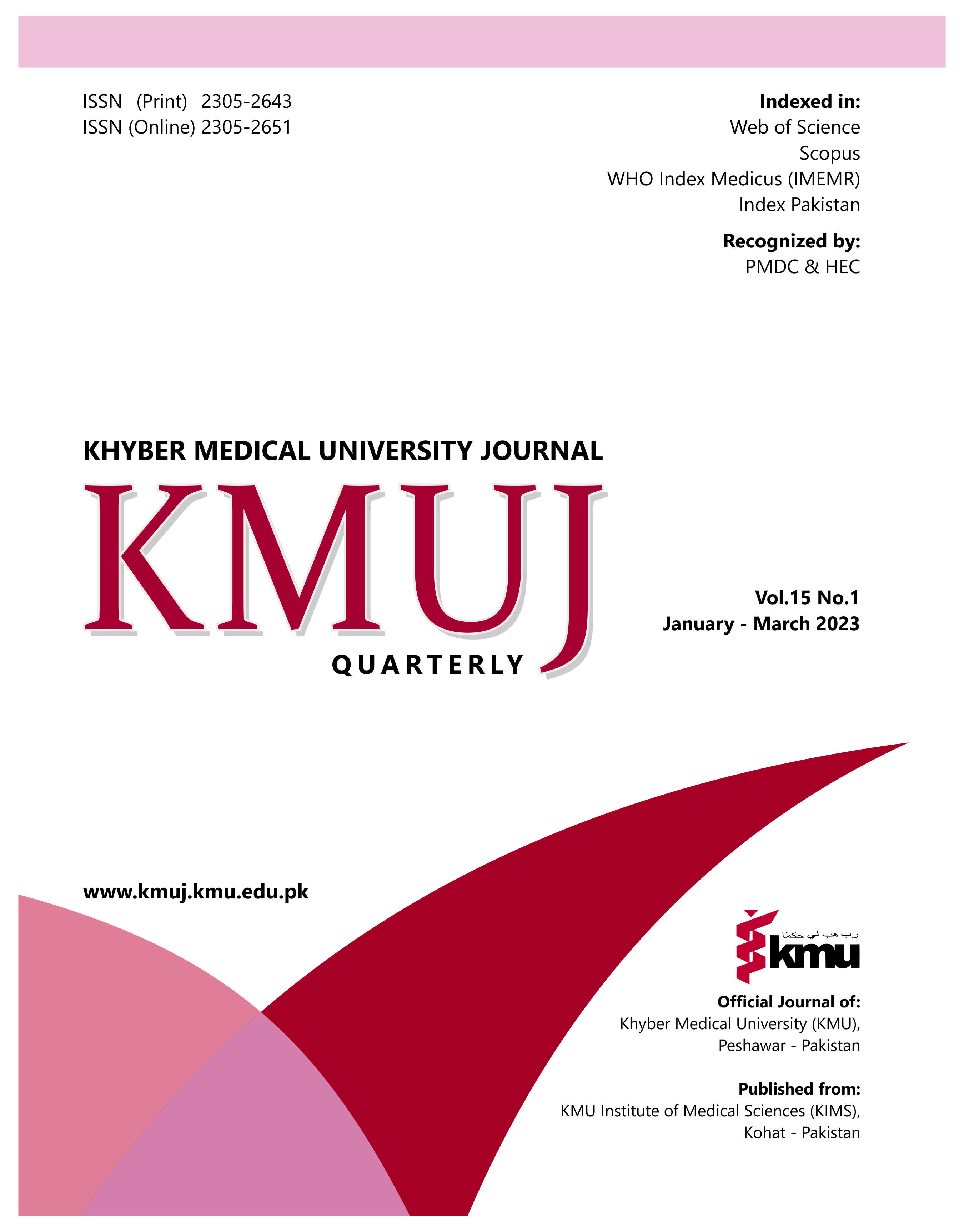UTILITY OF SPIROMETRY IN ASSESSMENT OF UPPER AIRWAY OBSTRUCTIONS: THE NEGLECTED PARAMETERS
Main Article Content
Abstract
Upper airway obstructions represent a huge burden to the health care system due to its high morbidity and cost to the economic systems. Therefore, it is important to understand the physiological parameters used in diagnosis and prognosis of these diseases. Various physiological lung parameters should be examined simultaneously to make the precise diagnosis of upper airway obstruction. Relying on only one parameter and neglecting others might lead to misdiagnosis and subsequent mismanagement. The shape of the flow-volume loop, Forced Expiratory Flow at 50% of vital capacity/Forced Inspiratory Flow at 50% of vital capacity ratio (FEF-50%/FIF-50%), Forced Expiratory Volume in 1 second /Forced Expiratory Volume after 0.5 seconds (FEV1/FEV0.5), Empey index, and the refined version of the Expiratory Disproportion Index (EDI) are of great value in the diagnosis of different types of upper airway obstructions. The shape of the flow-volume loop changes earlier than other spirometrical parameters and is very useful in detecting early changes in upper airway diseases. This review was aimed to explain and simplify the role of pulmonary function tests and flow volume curve not only for pulmonologists, but also for surgeons, anesthesiologists, and ENT specialists who can utilize and implement usefully these tests in their clinical practice.
Article Details
Work published in KMUJ is licensed under a
Creative Commons Attribution 4.0 License
Authors are permitted and encouraged to post their work online (e.g., in institutional repositories or on their website) prior to and during the submission process, as it can lead to productive exchanges, as well as earlier and greater citation of published work.
(e.g., in institutional repositories or on their website) prior to and during the submission process, as it can lead to productive exchanges, as well as earlier and greater citation of published work.
References
Brusasco V, Pellegrino R. Pulmonary function interpretative strategies: from statistics to clinical practice. Eur Respir J 2022;60(1):2200317. https://doi.org/10.1183/13993003.00317-2022
Gautam G, Michael Lippmann M. Disorders of the Central Airways and Upper Airway Obstruction. Pulmonary Medicine. Accessed on: June 10, 2022. Available from URL: https://www.pulmonologyadvisor.com/home/decision-support-in-medicine/pulmonary-medicine/disorders-of-the-central-airways-and-upper-airway-obstruction/
Sarkar M, Madabhavi IV, Mehta S, Mohanty S. Use of flow volume curve to evaluate large airway obstruction. Monaldi Arch Chest Dis 2022;92(4). https://doi.org/10.4081/monaldi.2022.1947
Won C, Michaud G, Kryger MH. Upper Airway Obstruction in Adults. In: Grippi MA, Elias JA, Fishman JA, Kotloff RM, Pack AI, Senior RM, Siegel MD. eds. Fishman's Pulmonary Diseases and Disorders, Fifth Edition. McGraw Hill; 2015. Accessed on: June 02, 2022. Available from URL: https://accessmedicine.mhmedical.com/content.aspx?bookid=1344§ionid=81189315
Sanchez-Guerrero J, Guerlain J, Samaha S, Burgess A, Lacau St Guily J, Périé S. Upper airway obstruction assessment: Peak inspiratory flow and clinical COPD Questionnaire. Clin Otolaryngol 2018;43(5):1303-11. http://doi.org/10.1111/coa.13149
Aboussouan L, Stoller J. Diagnosis and management of upper airway obstruction. Clin Chest Med 1994; 15(1): 35-53.
Karkhanis V, Desai U, Joshi J. Flow volume loop as a diagnostic marker. Lung India 2013;30(2):166-8. https://doi.org/10.4103/0970-2113.110435
Nouraei S, Franco R, Dowdall J, Nouraei S, Mills H, Virk J, et al. Physiology-based minimum clinically important difference thresholds in adult laryngotracheal stenosis. Laryngoscope 2014;124(10):2313-20. https://doi.org/10.1002/lary.24641
Carpenter D, Ferrante S, Bakos S, Clary M, Gelbard A, Daniero J. Utility of routine spirometry measures for surveillance of idiopathic subglottic stenosis. JAMA Otolaryngol Head Neck Surg 2019;145(1):21-6. https://doi.org/10.1001/jamaoto.2018.2717
Fiorelli A, Poggi C, Ardò NP, Messina G, Andreetti C, Venuta F, et al. Flow-volume curve analysis for predicting recurrence after endoscopic dilation of airway stenosis. Ann Thorac Surg 2019;108(1):203-10. https://doi.org/10.1016/j.athoracsur.2019.01.075
Al-Khlaiwi T. Flow volume curve: A diagnostic tool in extrathoracic airway obstruction. Pak J Med Sci 2020;36(4):846-7. https://doi.org/10.12669/pjms.36.4.2283
Empey DW. Assessment of upper airways obstruction. BMJ 1972;3(5825):503-5. https://doi.org/10.1136/bmj.3.5825.503
Rotman H, Liss H, Weg J. Diagnosis of upper airway obstruction by pulmonary function testing. Chest 1975;68(6):796-9. https://doi.org/10.1378/chest.68.6.796
Nouraei S, Nouraei S, Patel A, Murphy K, Giussani D, Koury E, et al. Diagnosis of laryngotracheal stenosis from routine pulmonary physiology using the expiratory disproportion index. Laryngoscope 2013;123(12): 3099-104. https://doi.org/10.1002/lary.24192
Soldatova L, Hrelec C, Matrka L. Can PFTS differentiate PVFMD from subglottic stenosis? Ann Otol Rhinol Laryngol 2016;125(12):959-64. https://doi.org/10.1177/0003489416665195
Calamari K, Politano S, Matrka L. Can the Expiratory Disproportion Index distinguish PVFMD from subglottic stenosis in obese patients? Ann Otol Rhinol Laryngol 2021;1:3489421990154. https://doi.org/10.1177/0003489421990154
Alrabiah A, Almohanna S, Aljasser A, Zakzouk A, Habib S, Almohizea M, et al. Utility of spirometry values for evaluating tracheal stenosis patients before and after balloon dilation. Ear Nose Throat J 2020:145561320936968. https://doi.org/10.1177/0145561320936968
Abdullah A, Alrabiah A, Habib S, Aljathlany Y, Aljasser A, Bukhari M, et al. The value of spirometry in subglottic stenosis. Ear Nose Throat J 2019;98(2):98-101. https://doi.org/10.1177/0145561318823309
Mares-Gutiérrez Y, Salinas-Escudero G, Aracena-Genao B, Martínez-González A, García-Minjares M, Flores YN. Preoperative risk assessment and spirometry is a cost-effective strategy to reduce post-operative complications and mortality in Mexico. PLoS One 2022;17(7):e0271953. https://doi.org/10.1371/journal.pone.0271953
Brunelli A, Kim A, Berger K, Addrizzo-Harris D. Physiologic evaluation of the patient with lung cancer being considered for resectional surgery: Diagnosis and management of lung cancer, 3rd ed: American College of Chest Physicians evidence-based clinical practice guidelines. Chest 2013;143(5 Suppl):e166S-e190S. https://doi.org/10.1378/chest.12-2395. Erratum in: Chest. 2014 Feb;145(2):437.
Shell D. Improving survival after pulmonary metastasectomy for sarcoma: analysis of prognostic factors. Gen Thorac Cardiovasc Surg 2023 Jan 12. https://doi.org/10.1007/s11748-023-01905-y
Grigorakos L, Sotiriou E, Koulendi D, Michail A, Alevizou S, Evagelopoulou P, et al. Preoperative pulmonary evaluation (PPE) as a prognostic factor in patients undergoing upper abdominal surgery. Hepatogastroenterology 2008;55(85):1229-32.
Vieira E, Degani-Costa L, Amorim B, Oliveira L, Miranda-Silva T, Sperandio PC, et al. Modified BODE Index to predict mortality in individuals with COPD: The Role of 4-Min Step Test. Respir Care 2020;65(7):977-83. https://doi.org/10.4187/respcare.06991
Agrawal A, Sahni S, Marder G, Shah R, Talwar A. Biphasic flow-volume loop in granulomatosis with polyangiitis related unilateral bronchus obstruction. Respiratory Investigation 2016;(54)4:280-83. https://doi.org/10.1016/j.resinv.2016.01.002
Slowik JM, Sankari A, Collen JF. Obstructive Sleep Apnea. 2022 Jun 28. In: StatPearls [Internet]. Treasure Island (FL): StatPearls Publishing; 2022 Jan. Accessed on: June 10, 2022. Available from URL: https://www.ncbi.nlm.nih.gov/books/NBK459252/
